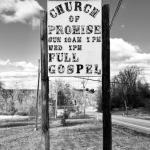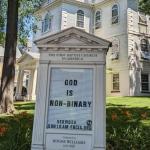Finding Christ Everywhere: The Power of Connection and Community
Introduction
It is interesting where Christ shows up in our daily journey. Christ showed up last Friday at the YMCA. Recently, I stepped back into the pulpit as a supply preacher and our district superintendent (DS) asked if I wanted to offer Communion last weekend. Agreeing, he said that he would consecrate the elements and give them to me the next time we saw each other at the YMCA. I did not know that he would be consecrating them with me, and we would both receive Communion in the gym at the YMCA. So at 0730 on Friday morning, standing in my workout gear, getting ready to throw down a beast of a workout, I first quieted my soul and listened contemplatively to the words of institution and remembered the gift that Jesus gave us in his presence, his death and his lasting ministry, all in solidarity with my DS and all the saints that have gone before and will come after.
And this got me thinking, where else does Christ show up?
Christ Shows Up in Many Places
Biblical Foundations
Biblically, Christ shows up all over the place in the New Testament. Most popularly are the appearances of Christ following the Resurrection, including those on the road to Emmaus, in the Upper Room, and along the shore of Galilee.
When I reflect on these biblical moments, I am reminded that the presence of Christ is not confined to sacred spaces or dramatic events but is woven quietly into the fabric of the ordinary. If we consider Christs presence in all of us, Christ shows up in the waiting room, the gym, a neighbor’s driveway, and even in the gentle hush after a heartfelt conversation that the holy seems to break in. Christ’s presence does not announce itself with grandeur but often comes in the form of unassuming grace—an unexpected word of encouragement, a shared burden, or an act of forgiveness.
Through these daily manifestations, we are called to cultivate an awareness of Christ in others in the big and small moments of our daily lives and to begin to see with eyes of faith and notice the sacred in the mundane. In doing so, we participate in a larger story, one where every interaction and gathering holds the possibility of divine encounter and transformation.
This Sunday, I preached and offered Communion at Miller’s Station United Methodist Church. Miller’s Station is a proud, old country church and I was filled with wonder as one of the congregants regaled me with the history of the church. Hurt by the disaffiliation, a faithful few still show up on Sunday expectantly, hoping for a revival, much like they have experienced in the past. One of the congregants apologized for the small number (4, including myself) and I reminded them of Christ’s Assurance of His Presence: “Where two or three are gathered…” (Matthew 18:20). We then got down to worship and sharing the word and eating at the table.
The Importance of Connection
The term “Connection” in relation to Wesley typically refers to the interconnectedness of churches and congregations within the Methodist tradition, emphasizing community and shared mission. This concept was foundational to John Wesley’s organization of the Methodist movement, promoting collaboration and support among its members.
When we recognize the Christ nature in all whom we love and share space with, we deepen our connection with all of humanity and creation. The Gospel calls us to unity, Jesus’ call to his disciples was to unity and the Christ nature is love in itself and binds us together in this unity. It moves through the interconnectedness of our churches, homes, learning spaces, play spaces and with the strangers we encounter every day in between.
Connection as a Spiritual Practice
As a practice, sitting with the notion of connection demonstrates to us that “separateness is an illusion. That’s what we learn through the spiritual practice of connections. Everything is interrelated — in time, space, and our very being. Both religion and science reveal this truth — Hinduism’s image of Indra’s net, Buddhism’s understanding of interbeing, the experiences of the mystics, the teachings of ecology and physics, even the Internet.”
Connection in Action
When we focus on Christ, we deepen our connection to God and to others.
Christianity centers on a personal relationship with God through Jesus Christ, encouraging believers to know Him and follow His example. Focusing on Christ offers insight into God’s character—His love, mercy, justice, and power—building trust and closeness. Through prayer, Scripture, and guidance from the Holy Spirit, Christians seek divine wisdom and direction. Christ’s atonement provides forgiveness, restoring the relationship with God. Belief in Christ frames life’s purpose within a divine plan and brings inner peace and strength, even during difficulties.
Focusing on Christ creates a shared foundation among believers, fostering unity and belonging. His teachings guide Christians toward a common mission of love, service, and spreading the Gospel, which encourages collaboration and support. Striving to embody Christ-like empathy and compassion transforms relationships through understanding and forgiveness. Communal worship, study, and service activities provide fellowship and accountability, strengthening connections. Emphasizing Christ helps overcome divisions and unites believers in purpose, while serving together deepens relationships through shared goals.
Together, we get community, a core element of the religion of Jesus.
The Importance of Christ in Community
Community is the heart of the Christ centered life as it fosters love, support, and accountability among believers, allowing them to grow in faith together. Engaging in relationships within a community helps individuals reflect Christ’s love and encourages them to live out their faith in meaningful ways.
We are charged by Jesus when he said, “A new command I give you: Love one another. As I have loved you, so you must love one another. By this everyone will know that you are my disciples, if you love one another” (John 13:34-35). This isn’t a solitary command; it explicitly requires interaction and relationship within a community. Going deeper, I am reminded of the word, Koinonia which implies deep participation, sharing, and communion. The early church in Acts 2:42-47 exemplifies this: “They devoted themselves to the apostles’ teaching and to fellowship, to the breaking of bread and to prayer. All the believers were together and had everything in common… Every day they continued to meet together in the temple courts and broke bread in their homes, eating together with glad and sincere hearts, praising God and enjoying the favor of all the people.” This paints a picture of a vibrant, interconnected community.
As I have alluded to before in many of my posts, Jesus was Jewish. There was a moral imperative to look out for each other. Jesus’ altruism and emotional intelligence would be criticized and ridiculed as weak and socialist today. But Jesus lived in a world very similar to ours, where taking care of others was imperative to preserving the safety and life of the community. When Jesus’ Christ nature bowed to the Christ nature of others, all perceived the love of God and were “healed”.
Conclusion
To close, we must see that the notion of Christ’s presence as not only an abstract idea but also a lived reality in the shared rhythms of daily life and the mutual care we extend to each other.
With intentionality, we seek out the Christ presence in each one around us, recognizing that each person we encounter is a potential seat of Christ. When we live in this way —whether in the solitude of prayer, the honest laughter of friendship, or in moments of service and solidarity—we become part of God’s ongoing story of grace unfolding in the world. Our gatherings, no matter how humble, become occasions for transformation, and our connections, however fragile, are threads woven by divine hands. In this way, our lives reflect the sacred tapestry of community, revealing glimpses of Christ wherever compassion, hope, and love take root.












